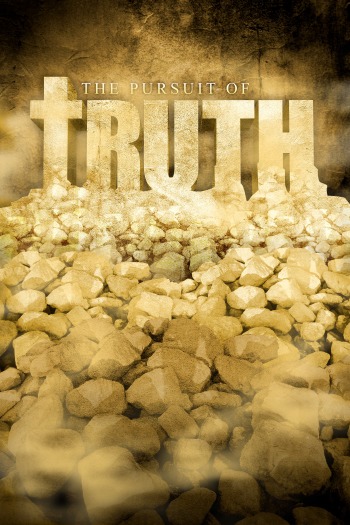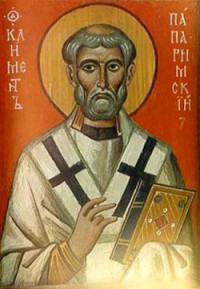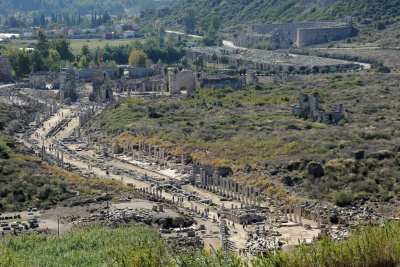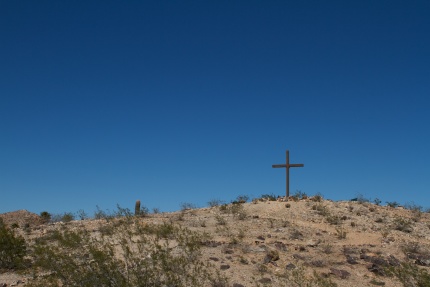is the new testament reliable?
4. Where possible, do the documents find support from other avenues of investigation and documentation?

The people, places and events described in the New Testament find numerous avenues of support both from ancient secular writers and from artifacts and archaeological remains. The Gospel writers provide numerous details in their accounts of people, places, dates, cultural and geographical settings which have been confirmed by non-Christian historical sources and archaeological discoveries.Many of the people referred to in the Gospels and the New Testament are mentioned by secular historians in the first and second centuries. The central person of the New Testament, Jesus Christ, is referred to by numerous historical sources including certain aspects of His life and ministry.
The following is a list of these references:
Secular Historical Sources:
A Cornelius Tacitus- Roman historian – A.D. 116 –refers to “Christians” and “Christus” – (Christ).
B Hadrian – A.D. 117-138 – refers to “Christians”.
C Thallus and Phlegon – A.D. 52 – discuss the darkness that took place around the time period that the Gospel accounts relate there was darkness during Christ’s crucifixion.
D Josephus – Jewish historian – A.D. 66-93 – refers to numerous individuals mentioned in the Gospels – Herod, Pilate, John the Baptist, Ananus the high priest, James the brother of Jesus, and references to Jesus Christ.
E Pliny the Younger – A.D. 112 – an extensive letter in which he refers to “Christians” and “Christ”. Emperor Trajan responds to Pliny’s letter and refers to “ Christians” who refuse to worship the “gods” of the Roman culture.
F Suetonius – A.D. 120 – refers to “Chrestus” (Christ).
G Lucian of Samosata – A.D. 170 – refers to “Christians” and the worship of their “crucified sage” (Christ).
H Mara Bar-Serapion – a Syrian Stoic philosopher – A.D. 70 – refers to Jesus as the “wise king”.
I Babylonian Talmud – derived from early first century Jewish traditions – A.D. 350-500 – refers to Yeshu (Jesus) who was “hanged on the Eve of the Passover” along with other references to Jesus Christ in derogatory terms.
Edwin Yamauchi – professor of history at Miami University stated the following regarding the non-New Testament sources of historical information regarding Jesus Christ –“Even if we did not have the New Testament of Christian writings, we would be able to conclude from such non-Christian writings as Josephus, the Talmud, Tacitus, and Pliny the Younger that: (1) Jesus was a Jewish teacher; (2) many people believed that he performed healings and exorcisms; (3) he was rejected by the Jewish leaders; (4) he was crucified under Pontius Pilate in the reign of Tiberius; (5) despite this shameful death, his followers, who believed that he was still alive, spread beyond Palestine so that there were multitudes of them in Rome by A.D. 64;(6) all kinds of people from the cities and countryside – men and women, slave and free – worshipped him as God by the beginning of the second century”. – Yamauchi, Edwin – Jesus Under Fire – Edited by Michael J. Wilkens and J.P. Moreland, Grand Rapids; Zondervan Pub. House, 1995, pages 221,222. (See the article – What will you do with Jesus Christ? for more information regarding this resources).
Early Church Fathers:
There are also key early church fathers of the first and second centuries with direct relationship links to the apostles and early disciples of Jesus Christ. The following are some of these early Christian fathers and their references to Christ and the Gospel events.
A. Papias – A.D. 60-130
According to reliable church history, Papias was a student of the apostle John. He wrote books that are no longer in existence, however, some of the content of these books are preserved by Eusebius (A.D.260-339) the third century church historian. Papias’ narratives provide a link to the eye-witnesses (apostle John and other early disciples) for early documentation on the person of Jesus Christ.
He stated –“On any occasion when a person came (in contact with me) who had been a follower of the Elders, I would inquire about the discourses of the elders – what was said by Andrew or by Peter or by Philip or by Thomas or James or by John or Matthew or any other of the Lord’s disciples and what Aristion and the Elder John, the disciples of the Lord, say. For I did not think that I could get so much profit from the contents of books as from the utterances of a living and abiding voice”. – Eusebius, The History of the Church – 3.39
Papias clearly affirms that he sought out testimony from first and second hand sources on the life and work of Jesus Christ and that he considered this information superior to written records. Eusebius also records from Papias the following:“And the elder said this also: Mark having become the interpreter of Peter wrote down accurately everything that he remembered, without however recording in order what was either said or done by Christ….” – 3:39.
Here Papias affirms the Gospel of Mark as being the account provided to Mark by the apostle Peter, who was an eyewitness of the life of Jesus Christ. (See History of the Church – Eusebius)
B. Polycarp – A.D. 69-155
Polycarp, was like Papias, a student of the apostle John. He died as a Christian martyr and during his life provided leadership for the church in Smyrna. In his letter to the Church at Philippi (A.D. 110) he stated –“Let us therefore without ceasing hold fast by our hope and by the earnest of our righteousness which is Jesus Christ who took up our sins in His own body upon the tree, who did no sin… For He gave this example to us in His own person and we believed this”. (See History of the Church – Eusebius)
C. Ignatius – A.D. 1st century – 117
Ignatius was, according to church tradition, a student of Peter, Paul and John ,wrote seven letters and provides extensive information on the early church and was a second-hand witness to the person and life of Jesus Christ . Regarding Jesus Christ and His death and resurrection he stated-“But be fully persuaded concerning the birth and the passion (crucifixion events) and the resurrection which took place in the time of the governorship of Pontius Pilate… For I know and believe that He (Jesus Christ) was in the flesh even after the resurrection and when He came to Peter and his company…” – Ignatius, Magnesians 1,/p>
D. Clement of Rome – A.D. 1st century – 102
 |
Church history affirms that Clement of Rome was a disciple of the apostles. He may have been the Clement mentioned by Paul in Philippians 4:3. He stated in his letter to the Church at Corinth –“The apostles received the gospel for us from the Lord Jesus Christ…. Having therefore received a charge and having been fully assured through the resurrection of our Lord Jesus Christ…” Clement, Corinthians p-42These four early Christian church fathers provide a direct link to the apostles and early eye-witnesses of the life of Jesus Christ.
There are also other first and early second century Christian writers who give us second hand information on the person of Jesus Christ. Quadratus (1st century) , Irenaeus (A.D. 110-190+), Justin Martyr (A.D.100-166) along with the first century writings – The Didache (A.D 95-97) and The Epistle of Barnabas (A.D. 70-130) provide witness to the birth, life, death and resurrection of Jesus Christ. Any argument that proposes that the Gospel of Jesus Christ is an invention of second, third or fourth century Christianity does not stand up to the extensive evidence of these early second-hand witness resources. A large percentage of these leaders died as martyrs for the message that they preached. They affirmed that the witness-based information that they provided was true. People may die for something false that they believe is true but people do not die for something they know to be false. Many of these men died as martyrs affirming that their witness was true.
Archaeological Resources
There are many archaeological artifacts and excavations that have confirmed customs, terms, cities, rulers, coinage, geographical descriptions and numerous details mentioned in the New Testament.Luke, more than any of the other Gospel writers, goes into numerous details in his writings (Gospel of Luke and book of Acts) that provide the historian and archaeologist with first century information from which to investigate. Sir William Ramsey (1851-1939) was the professor of classical archaeology and art at Oxford and the professor of humanity at Aberdeen University. He is regarded as one of the greatest archaeologists to have ever lived. He started his career completely skeptical regarding the New Testament documents and did not believe that they were narratives from the first century and probably had very little first century historical value.
However, after more than 30 years of study, his conclusion on the historical value of Luke’s writings certainly changed. He stated –“Luke is an historian of the first rank; not only are his statements of fact trustworthy….. this author should be placed along with the greatest of historians”. Ramsey, Sir William – The Bearing of the Recent Discovery on the Trustworthiness of the New Testament. London: Hodder and Stoughton, 1915 , page 222.He further states – “Luke’s history is unsurpassed in respect of its trustworthiness”. Ramsey, Sir William – St.Paul the Traveller and the Roman Citizen. Grand Rapids: Baker Book House, 1962, page 81.
Norman Geisler states regarding Luke’s narratives in the Gospel and the book of Acts – “In all, Luke names thirty two countries, fifty-four cities and nine islands without error.” – Baker Encyclopedia of Christian Apologetics: Norman Geisler – page 47.F.F.Bruce, in his book -The New Testament Documents: Are They Reliable? goes into great detail examining Luke’s use of cultural terms, statements of fact, geography… He states –“Three sections of the Acts are commonly known as ‘we-sections’, because in them the writer suddenly passes from a narrative in the third person to one in the first person plural, thus unobtrusively but adequately indicating that at certain periods he himself was present at the events described . Of these ‘we sections’ perhaps the most interesting is the last, which contains the great story of Paul’s voyage and shipwreck as he and his companions sailed from Palestine to Italy. This narrative has been called ‘one of the most instructive documents for knowledge of ancient seamanship’. The standard work in English on the subject is The Voyage and Shipwreck of St. Paul, published in 1848(4th ed. 1880) by James Smith of Jordanhill, himself an experienced yachtsman who was well acquainted with that part of the Mediterranean over which Paul’s ship sailed, and who bears witness to the remarkable accuracy of Luke’s account of each stage in the voyage, and was able to fix by the details given by Luke, the exact spot on the coast of Malta where the shipwreck must have taken place”. Bruce F. F. – The New Testament Documents: Are They Reliable?, Downers Grove: Inter Varsity Press, 1982, page 89,90.(For further details, see the list of books complied at the end of this presentation for information on the archaeological and historical accuracy of the New Testament documents).
Historian and classical scholar, Colin Hemer is his book – The Book of Acts in the Setting of Hellenistic History (1990) lists over (80) facts recorded in the last 16 chapters of Acts, starting in Acts 13 that have been confirmed by archaeological and historical discoveries. Some examples are as follows:

1. The proper port (Perga) for the direct destination from Cyprus – Acts 13:13.
2. The proper location of Lycaonia – Acts 14:6
3. The proper term “ politarchs”used of magistrates – Acts 17:6.
4. The correct title “ Areopagites” for members of the court – Acts 17:34
5. The references to the presence of synagogues in Thessalonica, Athens, Corinth- Acts 17:1; 17:17;18:4.
6. The use of the term “Asianos” – Acts 20:4.(See Colin Hemer’s book for the complete details on all (84) of these facts.)
Historian and scholar Craig Blomberg has studied the Gospel of John and examined the historical narratives that John provided and he has found almost (60) facts that have either been confirmed or are very likely correct based on archaeology and secular history. See his book – The Historical Reliability of John’s Gospel.
Some examples are as follows:
1. The use of stone jars in first century New Testament period – John 2:6
2. The hostility during Jesus’ time between the Jews and the Samaritans – John 4:9
3. The exact description of the composition of the Sanhedrin – John 11:47.
4. The fact that Caiaphas was the high priest at the time recorded – John 11:49.
5. The small insignificant village of Ephraim – John 11:546.) The five colonnades at the pool of Bethesda – John 5:2.(See Craig Blomberg’s book for the complete details on all (59) of these facts.)
Historians have studied and found that at least (30) people mentioned in the Gospel accounts and (the book of II Corinthians) are confirmed by secular historians or archaeological research. These include – Agrippa I; Agrippa II; Ananias; Annas; Aretas; Bernice (wife of Agrippa II); Caesar Augustus; Caiaphas; Claudius; Drusilla (wife of Felix) ; Egyptian false prophet; Erastus; Felix; Gallio; Gamaliel; Herod Antipas; Herod the Great; Herod Philip I; Herod Philip II; Herodias; Herodias’s daughter – Salome; James; John the Baptist; Judas the Galilean; Lysanias; Pilate; Quirinius; Porcius Festus; Sergius Paulus; Tiberius Caesar.(This is not a complete list. See the books mentioned in note #4 at the end of the presentation for complete details).
The Gospel writers, (and in particular Luke) provide numerous historical details in their narratives and yet they also record the fact of the miraculous events that transpired in the ministry of Jesus and in the early proclamation of the Gospel. For instance, Luke provides (84) verifiable historical facts in the last (16) chapters of Acts and yet he also records (35) supernatural events in the book of Acts. Right in the same narrative in which he records historical facts that can be verified, he provides the accounts of miracles. If Luke is accurate on issues of fact like directions, names of towns, people, depth of water, ship destinations… why can he not also be accurate when he records the miraculous events? If he can be trusted as an historian on matters open to verification, why not trust him on events that contain miracles? This is true not only for Luke, but for all of the Gospel writers. Where they can be examined as to their truthfulness and are found to be accurate, why not trust them when they report miraculous occurrences?
Historian and theologian Craig L. Blomberg, relates how archaeology has assisted and confirmed New Testament information:“archaeology can demonstrate that the places mentioned in the Gospels really existed and that customs, living conditions, topography, household and workplace furniture and tools, roads, coins, buildings and numerous other ‘stage props’ correspond to how the Gospels describe them. It can show that the names of certain characters in the Gospels are accurate, when we find inscriptional references to them elsewhere. Events and teachings ascribed to Jesus become intelligible and therefore plausible when we read against everything we know about life in Palestine in the first third of the first century.” – The Historical Reliability of the Gospels, Craig L. Blomberg, 2007, page 327.There are many examples of archaeological discoveries that have confirmed information provided in the New Testament. The following is a list of (10) examples:
1. Crucifixion Victims:

It has been known for many years that crucifixion victims were left on their crosses to decay and in many cases be devoured by wild animals. In some situations they would be buried in low, shallow, crude, common burial graves. In 1968 an ancient burial site was discovered that contained the remains of 35 bodies. One of the individuals found at this burial site was a young man named Yohanan Ben Ha’galgol and he had a 7” nail driven through both feet. His legs were crushed by a blow which was the common practice in the Roman’s use of a ‘crucifragium’. (John 19:31,32).
The crushed leg bones and the nail that was still in place in the victims feet provided confirming information about the crucifixion process like the one that Jesus Christ endured. This discovery also confirmed that a proper Jewish burial could be provided to a victim just as Jesus Christ received. (Matthew 27:57-66; Mark 15:42-47; Luke 23:50-56; John 19:31,32).
2. First Century Fishing Boat:
A drought took place in the 1980’s in the region of the Sea of Galilee and as a result, it exposed certain areas that otherwise would not be accessible. A well preserved first century fishing boat measuring 26.5 ft. long by 7.5 ft. wide by 4.5 ft. high was found in the mud bottom of the Sea of Galilee.
Ralph Muncaster has described this –“Under the direction of the Israeli Antiquities Authority, archaeologists began a race against time to carefully extract the boat from the mud before the waters returned… Eventually it was placed in a climate-controlled environment to protect it from aging…. Pots and lamps found inside the boat dated it to the first century. Carbon-14 testing further confirmed the dating. The design of the boat was typical of fishing boats used during that period on the Sea of Galilee. In the back of the boat was a raised section like the one where Jesus could have been sleeping, as indicated in the Gospel accounts. The boat could accommodate 15 people including the crew. This archaeological discovery confirms the description given in the Bible.” – 101 Reasons You Can Believe: Why the Christian Faith Makes Sense – Ralph O. Muncaster, pages 72,73.
3. New Testament Coins:
There are three coins that are mentioned in the New Testament and in the Gospels; the tribute penny (“denarius”), the silver piece (“shekel”) and the widow’s mite (“quadran” – Roman coin and the “lepta” – Greek coin). All three of these coins have been confirmed by archaeologists with a reasonable degree of certainty. The tribute penny in particular is of great interest. This coin “denarius”, is a small silver coin that bears the image of a Caesar on one side. It’s value was approximately equal to one man’s daily wage.
All three of the Synoptic Gospels record the account of the Jewish leaders attempt to trap Jesus with a question as to whether it was proper or not to pay taxes to the Roman emperor. Jesus asked them to show Him a coin and when they presented one to Him , He said “Render to Caesar the things that are Caesar’s and to God the things which are God’s” – Matthew 22:17-21; Mark 12:13-17; Luke 20:20-26. When Jesus did this, He was most likely referring to an image or mark on the coin that signified the Caesar. This coin has most likely been found and it bears an image of Caesar Augustus. The inscription around the head of the Caesar reads in Latin – “ TI CAESAR DIVI AUG F AUGUSTUS” which is translated “Augustus Tiberius Caesar Son of The Divine Augustus”.
4. The Nazareth Decree:
Norman Geisler has stated regarding this archaeological discovery-“A slab of stone was found in Nazareth in 1878, inscribed with a decree from Emperor Claudius (A.D.41-54) that no graves should be disturbed or bodies extracted or moved. This type of decree is not uncommon, but the startling fact is that here ‘the offender’ [shall be sentenced to capital punishment on [the] charge of violation of [a] sepulcher” (Hemer – The Book of Acts in the Setting of Hellenistic History, page 155.) Other notices warned of a fine, but death for disturbing graves?
A likely explanation is that Claudius having heard of the Christian doctrine of resurrection and Jesus’ empty tomb while investigating the riots of A.D. 49, decided not to let any such report surface again. This would make sense in light of the Jewish argument that the body had been stolen (Matthew 28:11-15). This is early testimony to the strong and persistent belief that Jesus rose from the dead.” – Baker Encyclopedia of Christian Apologetics, Geisler – page 48.
5. The Pilate Inscription:
In 1961, a discovery was made in Caesarea Maritima of a stone slab in which an inscription in Latin was engraved which stated – “Tiberium, Pontius Pilate, Prefect of Judea.” This discovery confirms not only the existence of Pilate but it also relates that his title as “Prefect of Judea” substantiates the New Testament’s reference to him as “governor” – Matthew 27:2.6. The Pool of Bethesda:
The pool of Bethesda was a site that had no record of it outside of the Gospel of John 5:1-15. John describes it as being near the sheep gate called Bethesda and that it was surrounded by five colonnades. Because of a lack of confirmed knowledge of this site, scholars doubted its existence. This description by John –“caused Bible scholars to doubt the reliability of John’s account, but the pool was duly uncovered in the 1930’s – with four colonnades around its edges and one across its middle.” – In the Steps of Jesus: An illustrated Guide to the Places of the Holy Land , Peter Walker , page170.“Exhaustive excavations by Israeli archaeologist Professor Joachim Jeremias have brought to light precisely such a building, still including two huge deep-cut cisterns, in the environs of Jerusalem’s Crusader Church of St. Anne.” – The Bible is History , Ian Wilson, page 221.
7. The Synagogue in Capernaum:
Mark 1:21,22; Luke 4:31-36, state that Jesus taught in a synagogue in Capernaum. The foundation of this synagogue was found beneath the ruins of a 4th century synagogue. The black basalt foundation of the 1st century synagogue is contrasted to the lime stone foundation of the 4th century synagogue. Pottery found beneath the floor of the 1st century synagogue confirmed its authentic 1st century dating.

8.The Town of Bethlehem:
“According to Eli Shukron, the director of the excavation on behalf of the Israel Antiquities Authority, ‘it seems that in the seventh year of the reign of a king referred to here is Hezekiah, Mannasseh or Josiah, a shipment was dispatched from Bethlehem to the king in Jerusalem’.” -Israel Antiquities Authority Articles – www.antiquities.org
“Shurkon told Ecumenical News International: ‘Here we can read[the word Bethlehem]in a clear Hebrew inscription from the First Temple period on a bulla found in Israel that arrived from Bethlehem to Jerusalem maybe to pay some tax. This is the Bethlehem next to Jerusalem referred to in the Bible’.” – www.pcusa.org/news/2012/6/19.
9. The Town of Nazareth:
R.T. France describes Nazareth as –“so insignificant that its name occurs nowhere in Jewish literature until long after the time of Jesus. It was a small village, largely devoted to agriculture, bypassed by the main roads which ran to the near-by Hellenistic city of Sepphoris, the capital of Galilee… Its population has been estimated at between 500 and 2,000 and the remains of its buildings show no sign of wealth in the relevant period.” – The Evidence for Jesus – R.T. France, page 143.In 2009, archaeologists from the Israeli Antiquities Authority discovered a house from the first century town of Nazareth. –“The discovery is of the utmost importance since it reveals for the very first time a house from the Jewish village of Nazareth and thereby sheds light on the way of life at the time of Jesus. The building that we found is small and modest and it is most likely typical of the dwellings in Nazareth in that period.” -www.antiquities.org.10. The Pavement:
In John 19:13, the court where Jesus was tried by Pilate was described by John as the “Pavement”, or in Hebrew “Gabbatha . Archaeologist William F. Albright has stated that this court was the court of the Tower of Antonia, the Roman military headquarters in Jerusalem and was discovered after centuries in which no record of it was known. This discovery confirmed the actual court room where Jesus was tried by the Roman Governor Pontus Pilate.These (10) examples could be added to by many more which demonstrate that the New Testament records can be substantiated by numerous archaeological discoveries. Places referred to in the New Testament such as Nazareth, Capernaum, Bethlehem and Bethany; people such as Herod the Great, Herod Antipas, Lysanias the Tetrach of Abilene, Pontius Pilate, Tiberius Caesar, Caiaphas, the high priest, Gallio, the Proconsul of Achaea, Erastus, Treasurer of Corinth, John the Baptist and many cultural and geographic descriptions have been confirmed by the excavations of archaeology.
Archaeologist William F. Albright stated –“The excessive skepticism shown toward the Bible by important historical schools of the eighteenth-and nineteenth centuries, certain phases of which still appear periodically, has been progressively discredited. Discovery after discovery has established the accuracy of innumerable details, and has brought increased recognition to the value of the Bible as a source of history.” – The Archaeology of Palestine – W.F. Albright , page 61.“on the whole…. Archaeological work has unquestionably strengthened confidence in the reliability of the Scriptural record. More than one archaeologist has found his respect for the Bible increased by the experience of excavation in Palestine. Archaeology has in many cases refuted the views of modern critics.” – What Mean These Stones?, Millar Burrows, page 1.